Enab Baladi’s investigations team
“You can’t stay in power unless you defeat As-Suwayda” is a saying that had been circulating in the period of coups before Ba’ath Party’s arrival to power in Syria. However, the governorate’s situation, along with the complexity of the political and military scene in Syria transformed it into an “isolated” area, depending on expectations and speculations, and was not as known as its neighboring governorate, Daraa, which has been the media’s favourite destination at the beginning of the peaceful action against the Syrian regime.
Apart from the governorate’s social importance and the place it occupies in the Syrian society, being the “capital of the Druze community,” As-Suwayda was neglected in all decisions and negotiations taken by either the regime or the opposition and even countries that have a say in the Syrian matter did not pay much attention to it.
Today, the governorate is witnessing military and security changes that might impose a new phase and a new future. Therefore, Enab Baladi is trying to find out about the conditions that As-Suwayda has gone through which resulted in the current situation and the future that awaits it, whether by imposing a system that existed seven years ago, or moving to a new formula that is in one way or the other related to the new constitution that is being talked about.
“Revolution” fires extinguished by local militias
As-Suwayda was already familiar with the protests that have been calling for freedom on the day its residents took to the streets of the city and confirmed that they stood next to the neighboring city Daraa and the rest of the Syrian cities.
The “town of Beni Maarouf” had been early involved in the protests. The Bar Association sit-in occurred on March 28, 2011, a group of its intellectuals participated in the protests that raided the city in April of the same year.
The protests did not stop at this point. The protest of Al-Qurayya, which was the birthplace of Sultan Pasha al-Atrash, occurred in June 2011, and spread to Salkhad, Shahba and other towns and villages of the governorate. The regime’s agents arrested dozens of activists for this reason, especially between 2011 and 2012.
After months of keeping up with the peaceful movement, the Syrian regime followed a plan in Jabal al-Arab by limiting its authority’s intervention in suppressing Al-Hirak and allowing the Shabiha and local militias from the governorate to take over the mission.
Abou Rayan al-Maaroufi, activist and member of the Suwayda 24 Network, which covers the province’s news in an “objective way”, considered that the turning point in the history of As-Suwayda was in 2013 after the entry of the Syrian Free Army to the governorate, led by the dissident lieutenant Khaldun Zainuddin, and the outbreak of battles for several days which ended with the death of Khaldun and 20 members from Daraa and As-Suwayda and dozens from Assad’s forces.
The regime media system machine then promoted that the battle was led by “terrorists”, Chechens and foreigners. According to Abou Rayan, the Syrian regime’s narrative was a factor of intimidation for the people of the province and a section of the opposition were forced to leave the country for being afraid of arrest. As-Suwayda experienced an unprecedented security tension accompanied by stagnation of peaceful activity in the other provinces.
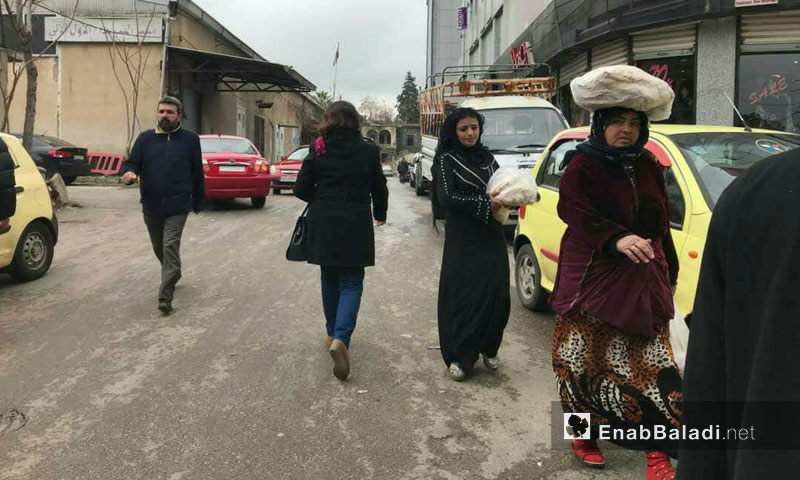
Displaced people from the city of Daraa in front of the automated oven in the city of As-Suwayda – December 2017 (Enab Baladi)
From Wafiq Nasser to Zahreddine
The province was ruled by a security and military grip after the appointment of the brigadier general of al-Assad forces, Wafiq Nasser, as a security and military commander of the southern region. This appointment coincided with the beginning of anti-Syrian regime demonstrations. Thus, the province of As-Suwayda was described then as Nasser Kingdom.
At the end of 2017, the Syrian regime issued security decisions, including the transfer of Nasser from As-Suwayda to the province of Hama. This move was considered as a new stage in the history of As-Suwayda, due to the fear he instilled in the hearts of the people of the province since 2012.
As-Suwayda has been subject to repeated assassinations and accused Nasser of being responsible for it. The most notable assassination was that of Sheikh Wahid al-Balous (Abu Fahd) with a number of other Druze Sheiks, and the two subsequent explosions, which targeted communities in the center of the city in September 2015.
Druze men then accused “the faction of Wafiq Nasser and al-Assad gang in As-Suwayda,” according to statements issued by the group. Data held the security committee responsible for assassinations in the region, in addition to “plunging the mountain deep into bloody confrontation.”
The dismissal of Nasser coincided with the emergence of Yarub, the son of the killed Brigadier General of the Syrian Republican Guard, Issam Zahreddine as part of an initiative to resolve the situation of those who were wanted and the dissidents in the city of As-Suwayda.
Loay al-Ali, who is known for his “bad reputation” in the southern region, was appointed instead of Nasser. He was the head of the military security branch in Daraa at the time of the revolution. He was responsible for cases of arrest and torture and was subject to an assassination attempt in Daraa with an explosive device.
According to information acquired by Enab Baladi, the Lebanese Hezbollah decided to completely remove Nasser from the scene, using Brigadier Osama Zahreddine, the brother of the deceased Brigadier General Issam Zahreddine, in addition to Yarub.
Hezbollah has been working to appoint Yarub as an official for the security of the Fourth Division’s security office in the southern region to serve as a front for the party’s movements and recruitment of fighters.
Yarub’s mission was to “restore the influence of al- Assad forces to the province of As-Suwayda, to return the dissidents and those who skipped compulsory service, and to get rid of the Druze factions that were formed under Nasser, by integrating them into the Fourth Division. The removal of Wafiq from the southern region was the main condition that Hezbollah and Zahreddine have set in order to fulfill this project.
However, Abou Rayan considered that Yarub would not have a prominent role in As-Suwayda. He would rather be able to form a militia within al-Assad’s “national defense”.
He also stated to Enab Baladi that he still has not been able to attract a large number of young people in the region, despite the position of his father Issam. He is unlikely to have any influence over the entire city. He is confined to the northern countryside where his family is located.
A security committee headed by the governor of As-Suwayda, Amer Ibrahim al-Ishi, is currently handling the city’s security affairs. It also includes the head of the branch of the Baath Socialist Party, Fawazat Shukair, police chief Mohammed Samra and the heads of security branches.
Leadership in As-Suwayda… Families govern the province
Before 2011, As-Suwayda was governed like any other region in Syria, through an alliance between existing authorities and traditional leaderships.
The influence of the Wise Sheikhs was great because they enjoyed a strong relationship with the security branches, although it was not quite balanced. The security authorities were controlling the sheikhs, according to Karam Mansour, from As-Suwayda to Enab Baladi.
After the outbreak of the revolution, the Syrians broke taboos, including the people of the province of As-Suwayda. A large number of young people participated in the revolutionary movement, compared to the other Druze regions in Syria, and of course the religious authorities stood against their movement.
Things remained as they are until the formation of ‘Al-Karama men’ movement, which started between 2013 and 2014 and promoted a slogan among the people that they were neutral and that they adopted the principle of “prohibiting” attacks on the people of the province and the participation of its population in the regime’s attacks against the rebellious Syrians. This movement was imposed in the province by force of arms.
Mansour explains that all the parties in As-Suwayda responded to the status quo as a result of the fear of the specter of war and the existence of a discourse that adopts calls for national unity and denies the inhabitants of the province the intention of secession following the demand of some components of the Syrian community for independence. What characterized this era was the rejection of compulsory service and granting the freedom to leave the province to those who wish to fight alongside one of the parties of the conflict. This pushed many people to join this movement.
From thence started all the attempts to destabilize the situation in As-Suwayda, especially by the Syrian regime, through supporting law offenders who smuggled, kidnapped and committed other crimes and violations.
The regime also activated the smuggling line through the Badia to transport materials such as fuel, arms and drugs, between As-Suwayda and Daraa, and those responsible for this phenomenon were cooperating with the security authorities.
Because basic materials in As-Suwayda are imported from Damascus, the capital has been able to impose large royalties on the province through the checkpoints. These barriers provide cargo shipments with receipts to protect them against kidnapping after paying the royalties. In case they refused to pay, cargo carriers will find a group waiting for them ten meters away. This phenomenon led to the deterioration of the living condition in As-Suwayda, and the increase of prices.
Despite the difficulties that the governorate faces, it actually represents the largest freedom zone in Syria compared to other regions. It is housing a large number of those who are escaping compulsory service, and because families influence in As-Suwayda is great, they managed to keep security forces away from their sons, who are now able to express their opinion within the boundaries of the province without being afraid of getting arrested.
Mansour asserts families’ influence in As-Suwayda to be the largest. In case one of its sons was arrested, the family immediately imposes a siege on the party that arrested him and threatens to kidnap one of its loyalties. Generally, this method always works to bring detainees back home.
However, public awareness is also common among residents of the province, for those who are involved in criminal offenses or felonies, and not with political opinion, do not receive protection or assistance from civil society, and people are not mobilized in order to find them in case they got arrested.
The nightmare of “Kidnapping” and “counter-kidnapping” among neighbors
The phenomenon of the abduction of civilians is one of the most dangerous aspects of violations in southern Syria between the two neighboring provinces Daraa and As-Suwayda. The citizens described this phenomenon as organized and public, which social, moral and economic repercussions representing a threat to civil peace in the region.
Activists from the two provinces documented the kidnapping of about 406 civilians in 2017, and their latest statistics indicate the kidnapping of 23 civilians from the two provinces in January 2018.
In January 2017 the number of abductees amounted to more than 150 in one month, most of them were released in exchange for a ransom. The number of kidnappings declined in the months following January and then rose again. At least 65 cases of kidnapping were documented in August 2017.
From January 2017 to the end of August, there were at least 300 cases of abduction, according to a report issued by the Syrians for Truth and Justice organization, entitled “Kidnapping as a Tool to ravel Community Fabric” and other knowledgeable sources.
According to testimonies collected by the organization, this phenomenon of kidnapping is carried out under the supervision of the security system and its associated militias in regime-held areas, and under the supervision of organized armed groups in areas, which are held by the armed forces of the opposition.
Director of the Syrian Organization for Truth and Justice, Bassam Al-Ahmad, described kidnapping and counter-kidnapping as one of the most egregious violations that emerged in the aftermath of the Syrian conflict, especially that it is accompanied with many other cases such as torture, enforced disappearances, murder and extortion.
“It is important to note here that we are not talking about kidnappings and counter-kidnappings as individual acts. Rather, we are talking about operations organized by people associated in most cases with the security system in the province of As-Suwayda, and others linked to armed groups in opposition-held areas,” said al-Ahmad to Enab Baladi.
Al-Ahmad pointed out that the other atrocity of this phenomenon is that most of the abductees are victims of criminal goals and ends, and are thrown into this spiral. The relatives of abduction victims have become kidnappers, who have resorted to abduction in order to restore their loved ones.
Recession of As-Suwayda Economy… Projects are just dead letters
Investments were absent from the governorate and job opportunities declined after 2011. Youth resorted to either migration or volunteering in the “national defense” militias, similar to the province of Lattakia, which was driven by poverty to join the popular committees and security forces, and hence the use of these systems as an existential situation.
Journalist Salim Morshed, from As-Suwayda city, told Enab Baladi that the governorate is poor and unable to establish independent projects. It used to rely on expatriates’ funds and seasons, while small loans contributed to the establishment of small private projects before the war.
After 2011, the economic situation in the city changed for it has suffered from high prices and lack of basic materials and its elevated cost because of the monopoly of war traders, who are cooperating with the security forces, according to Morshed, who confirmed all this along with the contribution of currency difference, which led to a movement driven by traders rather than an effective economic movement.
The proliferation of banditry and kidnapping gangs and ransom demand has led to the launching of large projects, while the oil and fuel trade has flourished. Therefore, the province became a link between ISIS-held areas in the Badia and the eastern region to the opposition-held areas in Daraa. This is done with the protection and knowledge of security officers and al-Assad officers.
The fourth Armoured division of al-Assad forces established a military checkpoint near al-Masmiyah area on the highway between Damascus and As-Suwayda last summer. It has worked to impose huge fees on inbound and outbound cargoes under the pretext of tariff protection. This led to the increase of prices since most of the goods come from Damascus. As a result the Wise Sheikhs headed toward the capital and threatened to remove the barrier by force. The agents responsible for tariff protections and providing receipts were arrested. The barrier agents then no longer asked for fees and receipts. They were paid between 2,000 and 25,000 pounds per car according to the type of the load, before the agents suddenly withdrew by the end of January 2018.
Maintaining an economic balance
Morshed explained that the economic recession is clear in the province. The confused policies of the regime either concerning dollar exchange rate or unfair economic decisions could not enable the province and capital to create any other space for any new sector in the region. It was no longer capable of attracting tourists because it was isolated, for it was near and Jordan was closing the border.
Over the years, the government of the Syrian regime has promised tourism, agricultural and economic projects and to provide an imminent solution for the problem of unemployment. However, newspaper Al-Watan, which is close to the regime, stated in a report issued in May 2015 that in practice the province did not witness the establishment of any project especially the project of the manufacture of screws and metal chains, which was referred to as the first factory in the Middle East, and will provide hundreds of job opportunities, in addition to several projects, which have been announced but have been canceled under the pretext of the absence of raw material.
Residents of the city were expecting a qualitative leap in the city’s economy after the head of As-Suwayda Chamber of Commerce and Industry, Faysal Saif, proposed to the government of the regime the opening of a border crossing between Syria and Jordan as an alternative to the Nasib border crossing in Daraa. However, the agreement was not fulfilled until now because it was delayed by Jordan.
Nevertheless, As-Suwayda is maintaining a degree of balance that does not undermine the relative stability within the governorate, which is fulfilled through regional pressure over the regime, according to Morshed.
The displaced of As-Suwayda between “restriction” and “welcome”
The Syrian regime has sought to discredit As-Suwayda in terms of receiving displaced people from various Syrian regions, although the governorate is housing more than 70,000 displaced people, most of whom are integrated within the community.
As-Suwayda remained one of Syria’s “safest” areas, given its neutralization of military operations, making it an important target for the displaced.
However, this refuge for the displaced, though safe, was not at the required level, given various factors, notably the lack of support for displaced people from relief and humanitarian organizations, as well as the relative poverty of the province and the declining employment opportunities.
Inciting conflicts with residence permits
According to the journalist resident in the city of As-Suwayda Salim Morshed, most of the displaced within the province are from Daraa, Idlib, Quneitra and Aleppo, while the residents of the eastern region of Syria have not found a way to reach the governorate.
The year 2016 witnessed the largest restrictions on the internal displacement of families who left the province of Deir ez-Zor and Raqqa, in addition to the arrival of families from the eastern countryside of Aleppo and Homs countryside which entered to the Syrian Badia through the east of As-Suwayda.
The regime prevented tens of thousands of citizens from entering As-Suwayda and forced them to stay in some villages in the eastern countryside, under difficult humanitarian conditions, according to local activists.
In addition to promoting the idea that those coming from the eastern regions are ISIS dormant cells, which could undermine the security of the province, thus the displaced from the eastern regions were prevented of residence in the province, and later some of them were transferred to the town of Harjala, in the countryside of Damascus.
In addition, the regime barriers deployed at the entrances to As-Suwayda have tightened their procedures, and according to Morshed, the regime tried to incite trouble between the people of As-Suwayda and the displaced, in addition to intimidating those arriving by means of residence permits, which are requested at the checkpoints, to make sure that this area is independent and that the entry of the displaced must be legitimate.
However, Morshed believes that “the regime’s policy did not affect the people of As-Suwayda, and the context of coexistence in the city did not change, as evidenced by the absence of any clashes or little quarrels between the residents and the displaced.”
Money of the displaced in state hands
Morshed asserts to Enab Baladi that as a hub for the displaced, As-Suwayda’s demographic structure has not changed, and the province does not have to bear a heavy burden for having received them as a result of the vastness of the countryside, in addition to the city’s low population, basically.
However, the main burden is endured by the displaced themselves, because of little material support and the scarcity of relief supplies.
The Red Crescent is the most important supporter for the displaced, with the participation of UNESCO-affiliated organizations, small local associations and branches of large Syrian associations involved in relief and support operations.
The journalist Morshed pointed out that the work of some organizations “includes large corruption deals because the ministries and trade unions are the intermediary between the organizations and the residents.”
Reports and press investigations have highlighted the difficult conditions of displaced people in As-Suwayda in light of the poor value of the assistance they receive, while there is talk about the exploitation of the funds of organizations by some governmental institutions which benefit from large-scale financial deals.
A Syrian Opposition figure: The future of As-Suwayda depends on the political map
In light of the conditions that the province is going through, questions are raised about the future that awaits it.
Enab Baladi met the Syrian opposition figure, Alays Mafrij, the resident of the city of As-Suwayda, who considered that the future of As-Suwayda cannot be discussed in an independent way, as if it were an independent province, without addressing the future of Syria in the political map, where there are questions about the form that it will take.
She believes that administrative decentralization may be relatively successful in As-Suwayda, in terms of tools and representation of members only, unlike areas controlled by the armed opposition, which have been trained in their tools, and to control and rule the region in an autonomous and competencies-based manner.
In 2011, the Syrian regime worked on the Local Administration Law, Decree 107, but it did not approve it and it was implemented in the liberated areas.
Mafrij pointed out that the areas under the control of the regime, including As-Suwayda, were governed by chaotic escalation and insecurity, which led to negative effects, spearheaded by killings and arrests.
In light of international interventions and the loss of local powers in Syria for any cards through which to impose a new reality on the ground with one vision, Mafrij considered that the internationalization and the sharing of influence set by influential international powers have negative effects and risks on the future of the province, and wondered which party will control As-Suwayda, and noted that this will be linked to the map for political solution as any area under the control of the Syrian regime.
She confirmed that the file of the province cannot be dealt with separately, only in case there is administrative decentralization in the federal project, which will be approved in the Constitution, on which it is supposed to agree later.
There were declarations and Political statements in As-Suwayda, according to Mafrij, and the province had taken a firm position from the Sochi Conference, and it proved its presence in every political situation, most recently in the Geneva negotiations.
In the past, it had a position through political rallies, but the state of repression pursued by the Syrian regime did not encourage the emergence of political figures in the media, despite the presence of bodies such as the National Coordination Committee, which has been a political partner since Riyadh 1.
With regard to the peaceful movement in early 2011, the Syrian opposition figure pointed to a bias by the satellite channels about reporting on demonstrations from As-Suwayda in the first years of the revolution, and prevented the publication of video recordings that activists periodically sent.
She said that the media had been eliminated from the map of peaceful demonstrations, because it was based only on the strategy of covering the areas of revolt in which the Syrian regime used live bullets and direct killing.
She added that at least 30 young people were killed from the province under torture by the Syrian regime’s security services, except for those who disappeared forcibly.
As-Suwayda was not part of the conflict but part of the revolution. According to Mafrij, there were loyalists and opponents, but the regime was able to prove its existence through murder, intimidation, arrest, and tight security measures.
The Syrian regime used the concept of “state within a state” and used minorities as a formalistic front in government by handing them political positions in the structure of the state.
She explained that al-Assad regime followed the method of isolation within the Syrian society, and the international community adopted its idea of protecting minorities which it invoked in the war against its opponents.
With regard to the marginalization which affected As-Suwayda at the level of political positions in government services, Mafrij said that the regime’s mentality was centered on relying on the Sunni bourgeoisie from Damascus and Aleppo, and on the active Alawites.
She spoke about Issam Zahreddine and the propaganda promoted by the regime that he is a national hero and prevented the division of Syria, and the regime used it to show the international community that he belongs to a minority and defends Syria against “terrorism.”
At the beginning of the inauguration of Hafez el-Assad, rules and regulations for positions in government, army and security have been established for the pillars of his rule after coups, treachery and assassinations.
After the active military officers purge during Hafez el-Assad era in the 1970s, As-Suwayda didn’t need, from the point of view of the government, all this representation in positions as before Hafez el-Assad coup.
In comparison to the population, sects or races of the provinces, As-Suwayda was the most represented and present in the political scene before the 70s. There were prominent figures, among them were Abdul Karim Zahreddine, Fahd Al-Shaer, Shibli al-Aysami and Salim Hatum, who was assassinated during the presidency of Hafez al-Assad.
if you think the article contain wrong information or you have additional details Send Correction
النسخة العربية من المقال
-
Follow us :
Most viewed
- Printing Syrian currency in Europe... A file on the table
- Complex steps to establish new Syrian army
- National Security Council in Syria: A necessity imposed by reality
- SDF-Damascus agreement in Aleppo: A test balloon for broader consensus
- Why establishing a ministry of emergencies and disasters in Syria is crucial











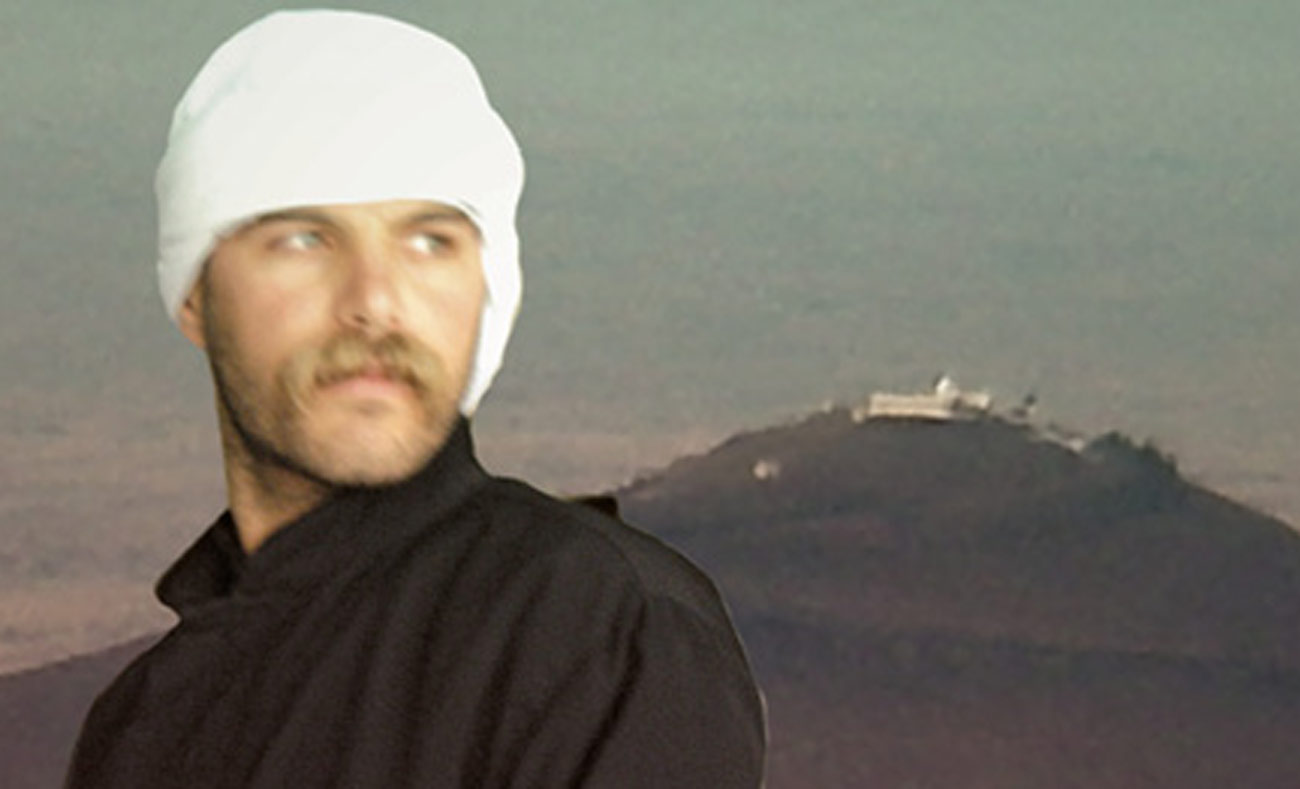
 Expressive (Modified by Enab Baladi)
Expressive (Modified by Enab Baladi)





 A
A
A
A
A
A

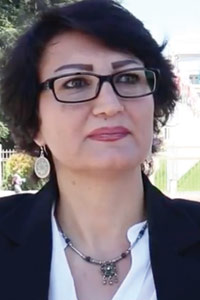
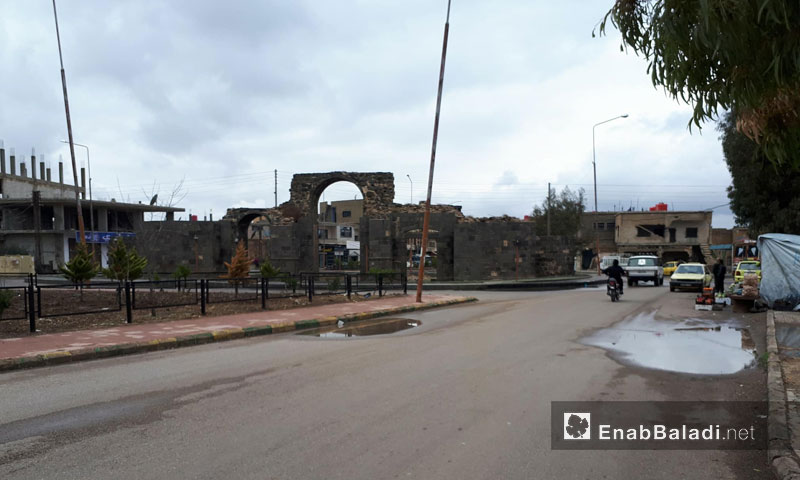





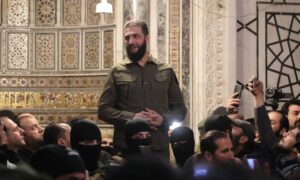
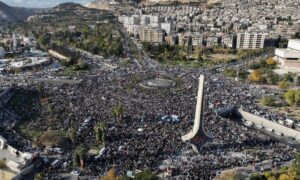
 More In-Depth
More In-Depth